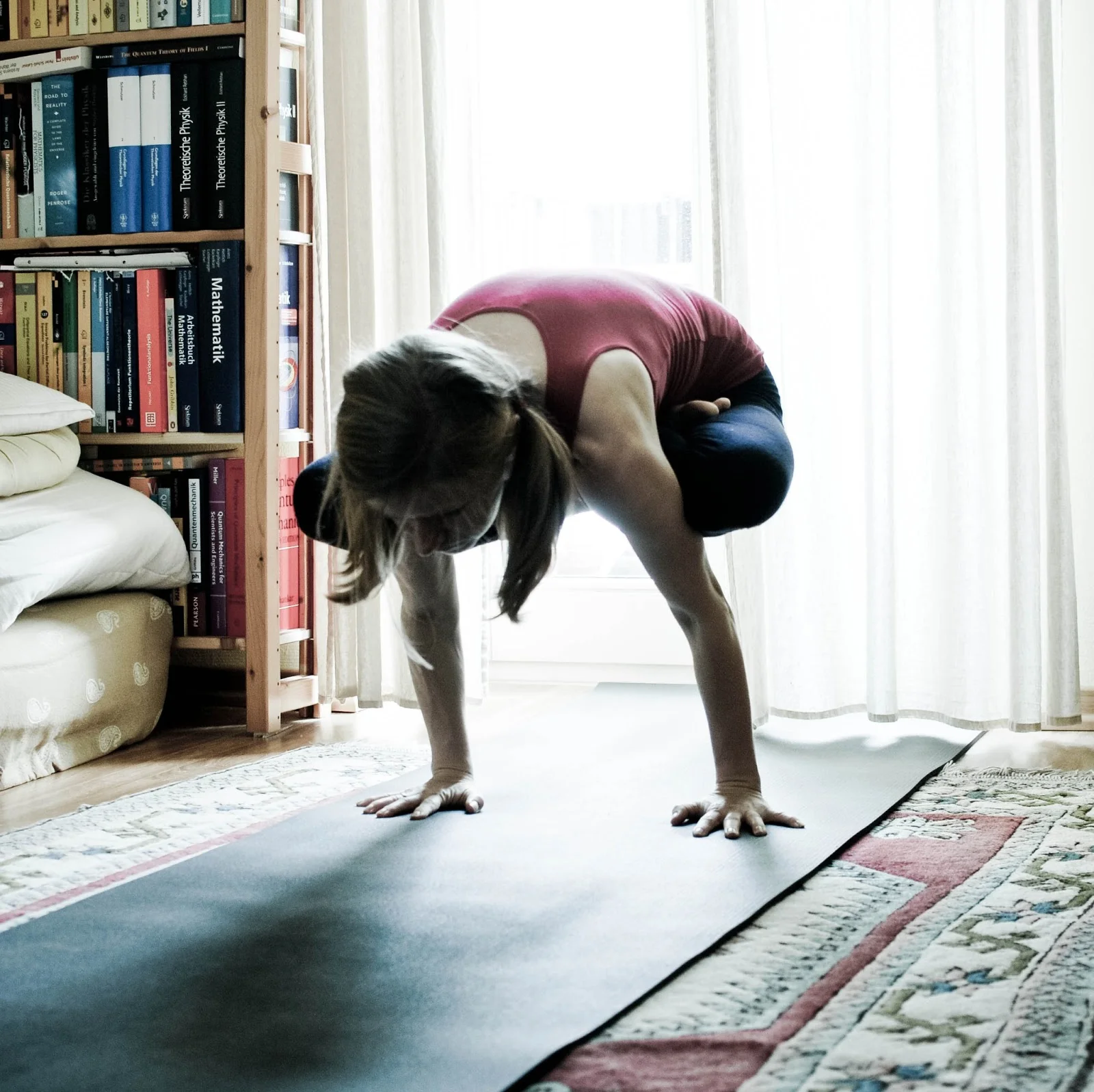Each of the four Ashtanga yoga series has in the middle part an asana sequence with padmasana.
Series: Garbha pindasana and kukkutasana
Series: Supta vajrasana (a static part and a dynamic part)
Series: Kukkutasana A, B and C (three different vinyasas)
Series: Punga Kukkutasana (very demanding)
My light bulb moment yesterday:
In the first series we have padmasana combined with forward bending.
In the second series we have padmasana combined with back banding.
In the third series we have padmasana combined with arm balancing.
In the forth series we have padmasana combined with arm balancing and twisting.
The combination padmasana with inversion is covered in the closing sequence. This is perfect!
With this analyses it’s possible to find similar variations that might be a bit easier at first than the given asana. One can approach any asana slowly, step by step.
Many yoginis struggle with garbha pindasana. When a yogini is able to sit comfortably in lotus pose the pose is almost mastered. The rest is technique. I’ll write about this later.
The asana of the second series requires usually help from another person. I had a teacher who allowed other yoginis to adjust. Another teacher didn’t like this at all. Not many fellow yoginis could adjust in a way that the adjustment was a support. At home one has no teacher at all. So what to do. I used to sit in padmasana, arms crossed behind the back. I held my toes and took 5 deep breaths. That was it. With my new analysis I’d do an asana with padmasana combined with back bending. There are a lot of variations.
Urdhva kukkutasana is an arm balance asana. The differences between A, B and C refer to the vinyasas. The not dynamic part is always the same. In order to move into this asana I did headstand with the hands flat on the floor. Then I crossed the legs into padmasana and lowered them. When they touched the arms I lifted the body, I stretched my arms. I lost so much strength that I’m not able to lift my body these days. That’s why I show above a picture from 2013.
I never practiced punga kukkutasana. Once I tried it, but I’m miles away from this twist. Easier variation can be integrated in the first series, so that the body gets prepared for the future.
In one of my next pose I’ll show variations of asanas with padmasana……..there are a lot variations.
I’m ready now for primary.



